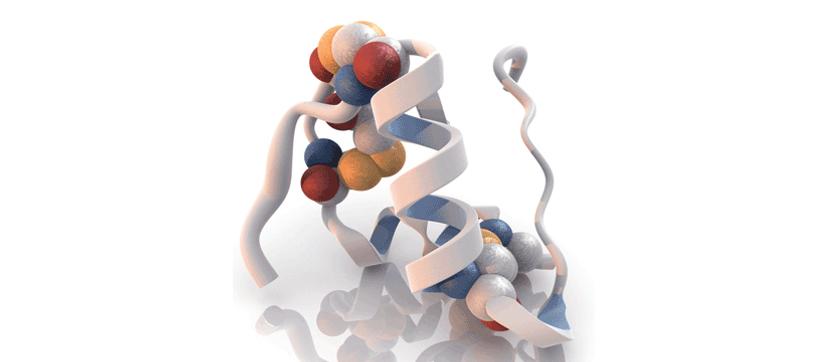Proteomics: Professor John Yates of the Scripps Research Institute Shares His Latest Insights
Discover how stable isotopes are being used in world-leading quantitative proteomics research at the Yates Laboratory
25 Apr 2017

Professor John Yates, Yates Laboratory, Scripps Research Institute, USA Yates Laboratory, Scripps Research Institute, USA Research in the Yates lab is focused on the development and application of mass spectrometry-based proteomics techniques to a wide range of biological questions. The lab has been instrumental in the evolution of the field to its current status, having pioneered many of the landmark advances that form the basis for prevailing proteomics practices.
The use of isotopically labeled AHA broadens the research opportunities for us
Professor John Yates Yates Laboratory, Scripps Research Institute
Professor John Yates leads the esteemed Yates Laboratory at the Scripps Research Institute in its groundbreaking proteomics research. The Yates Laboratory has been working in partnership with Cambridge Isotope Laboratories, a leading producer of stable isotopes and stable isotope-labeled compounds. SelectScience spoke to Professor Yates to learn more about this partnership, and the importance of using reliable stable isotopes in his work.
SS: Could you start by confirming your name, job title and place of work?
JY: My name is John R Yates III, I’m a Professor of Molecular Medicine and Neuroscience at the Scripps Research Institute. I’m also the Editor-in-Chief of the Journal of Proteome Research.
SS: Could you tell us what your main job role and responsibilities are?
JY: I head up the Yates Laboratory at the Scripps Research Institute, where we are focused on the development and application of mass spectrometry-based proteomics techniques. This work allows us to answer extremely important questions about diseases such as Alzheimer’s, cystic fibrosis, schizophrenia and depression.
SS: You are an expert in quantitative proteomics, how did you come to be working in this field?
JY: I’ve been working in this field for about 25 years, before it was even called ‘proteomics’ in fact! I did my degrees in chemistry, focusing on protein biochemistry using mass spectrometry (MS) and I’ve been studying large-scale proteomics ever since.
Advancing proteomics research
SS: Can you tell us more about your collaboration with Cambridge Isotope Laboratories (CIL)?
JY: Our collaboration came about very naturally, when we were looking for a source of 15N stable isotopes. We wanted to label rats with 15N; in quantitative proteomics we use labeled tissues as an internal standard in animal models of disease. In order to label the rats, we needed the right food source and CIL provided us with a spirulina feed labelled with the 15N isotope. You can use 15N to study proteins in any tissue, for many different kinds of diseases, but in our laboratory we are mainly using it to study brain disease. Working with CIL has allowed us to carry out new kinds of experiments and to ask different kinds of questions, that we could never have done before.
SS: You recently worked with CIL to develop a stable isotope labeled azidohomoalanine (AHA) substrate, could you tell us more about this?
JY: AHA is a stable, non-toxic amino acid homolog. The substrate readily replaces methionine during protein synthesis so it is ideally suited for evaluating newly synthesized proteins (NSPs). We use AHA in a process called ‘click chemistry’, in which we use a biotin-alkyne to covalently react with the azido group of AHA-labeled proteins in the tissue homogenate. We can then enrich the NSPs before MS analysis. The enrichment and quantification of NSPs, using MS, enables us to look at very important early regulatory or expression changes associated with certain diseases. This new stable isotope labeled version of AHA now allows the use of more direct quantitative experiments. The use of AHA is known as Bioorthogonal Non-canonical Amino Acid Tagging or BONCAT.

Cambridge Isotope Laboratories offers a complete listing of Stable Isotope Labeled Amino Acids, including AHA for all your research needs
Image courtesy of Cambridge Isotope Laboratories
SS: What is the advantage of using this substrate in your research?
JY: The use of AHA allows us to ask new questions and look at how things might change. For example, we are currently looking at applications of AHA in our schizophrenia work, researching short-term protein changes. We are using proteomic techniques to try to understand the molecular mechanisms underlying this disease. We currently use stable isotope labeling in mammals (SILAM) in our schizophrenia animal models because we need to use animal models when we are studying the progression of brain disorders. Hopefully, one day this will help us to better understand treatment and diagnosis of this complex neuropsychiatric disorder. The use of isotopically labeled AHA broadens the research opportunities for us.
SS: Finally, how does your collaboration with CIL help you to achieve your research goals?
JY: Our partnership with CIL allows us to carry out the experiments that we want to do. The company works very effectively with us, the team gets back to us in a timely fashion when we have questions and our stock arrives when we need it. We are very appreciative that they have taken the time to listen to our needs and help us to find the right solutions.
View the range of Stable Isotope Labeled Amino Acids available from Cambridge Isotope Laboratories
